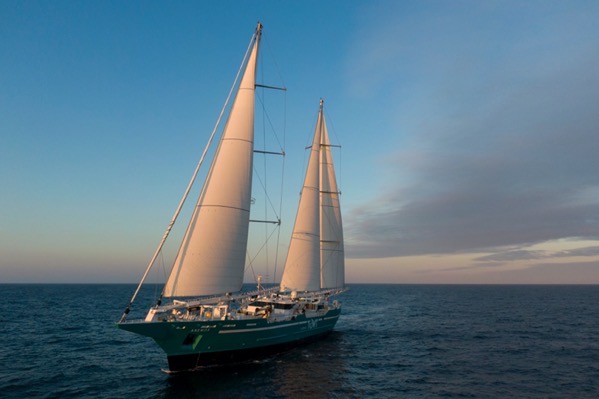Regular readers will know that I like electrifying things. Our car has been electric for nearly a decade now, and we also have a lawnmower, a strimmer, two hedge-trimmers, two bicycles and a range of other devices powered by batteries. We also generate most of our own electricity, and buy the rest overnight at cheap rates from renewable sources. All very satisfying.
Perhaps my favourite such purchase, though, is our electric outboard motor, which makes powered boating as pleasant as sailing, and has provided us with no end of peaceful enjoyment.
Larger boats, however, are a problem, when it comes to electrification.
Though there are some bigger ships and even some car ferries powered by batteries, they tend not to cover very great distances. Meanwhile, traditional shipping burns vast amounts of fuel, and typically very dirty fuel, because the big diesel engines can make use of far less refined oils than the stuff we use on land. (And, ironically, something like 40% of all global shipping consists of the transport of fossil fuels themselves to other places that want to burn them!)
I can’t help wondering whether more shipping could be powered by nuclear reactors. This is, of course, already used for submarines, primarily because nuclear reactors don’t depend on oxygen. But suppose you want propulsion that doesn’t depend on carbon either? Still, nuclear fission does have some challenges of its own.
So I think many people are hoping that the big cargo ships of the future will carry hydrogen tanks instead of diesel tanks, and that will be the eventual answer to how we make them cleaner, at least until we have mobile fusion reactors that can extract deuterium from the sea water en route…
But there may be another important option, which comes not so much from the future, as from the past.
Last month, for the first time in nearly a century, a large cargo ship set off across the Atlantic powered almost entirely by sail. (See this Fast Company post for the details.) These are sailing ships for the modern age, taking advantage of carbon-fibre masts, meteorological forecasts tied to the routing software, and automations that allow them to be sailed by a very modest crew. Winds are easier to predict than in the past, and spars and sails can be bigger while still being manageable. TOWT, the French company behind the ships, has two in operation now, and six more on order.
I’ve no idea how significant a part of our future shipping needs could be met this way, but I really hope they can play a substantial part, because, quite apart from everything else, aren’t they beautiful?
